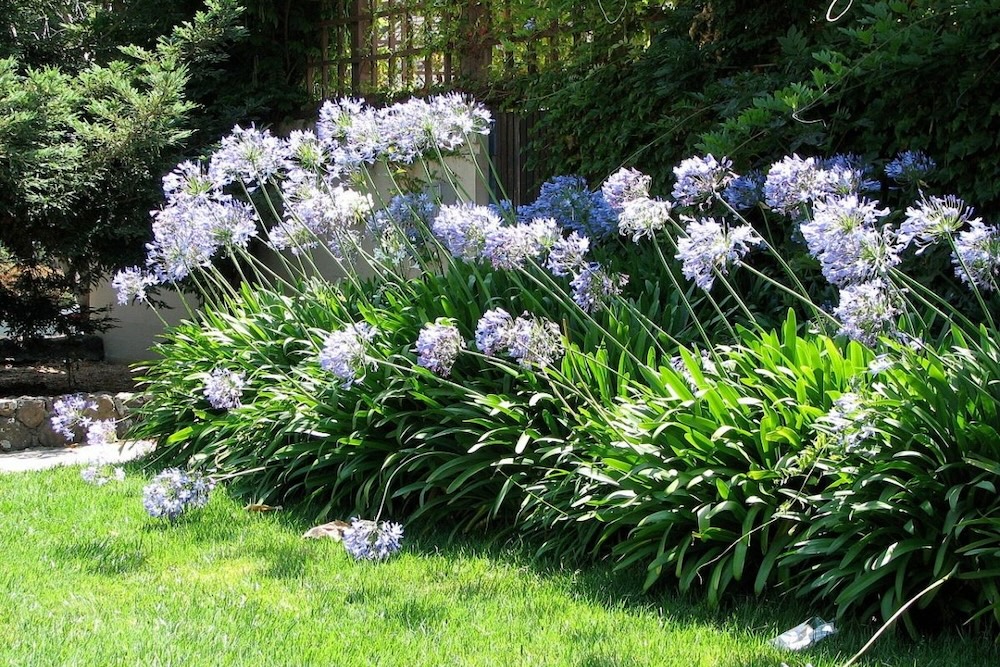Spectacular Agapanthus: Enhancing Your Garden's Beauty
Mastering the Art of Agapanthus Treatment: Essential Steps for Healthy And Balanced Growth and Vibrant Flowers
In the realm of horticulture, the growing of agapanthus stands as a satisfying endeavor for those that seek to nurture these stylish flowering plants. From selecting the right variety to grasping pruning strategies, the journey in the direction of cultivating growing agapanthus plants is diverse and holds the key to opening the complete capacity of these botanical treasures.

Choosing the Right Agapanthus Variety

When choosing the best Agapanthus range for your yard, take into consideration elements such as climate viability, bloom color, and growth behavior. Agapanthus, commonly known as Lily of the Nile or African lily, is available in a range of colors ranging from shades of purple and blue to white. Choose a blossom shade that matches your existing garden combination to create an unified landscape. Furthermore, consider the climate in your area to make sure the Agapanthus range you select can grow in your specific conditions. Some varieties are extra tolerant of cold temperature levels, while others prefer warmer environments. Understanding the growth practice of different Agapanthus varieties is crucial for appropriate positioning within your garden. Some varieties have a clumping development practice, perfect for containers or borders, while others have an even more dispersing nature, ideal for ground cover or mass growings. By thoroughly examining these variables, you can pick the perfect Agapanthus range to boost the charm of your yard.
Perfect Planting Problems
Considering the ideal ecological demands is crucial for successful Agapanthus growing. Agapanthus thrives in well-draining soil with a somewhat acidic to neutral pH level. When planting, select a place that obtains complete sunlight to partial shade. In hotter environments, supplying some mid-day shade can stop scorching of the fallen leaves. Agapanthus plants are sensitive to cool temperature levels and must be protected from frost throughout winter season.
To make certain healthy development and lively blooms, plant Agapanthus bulbs at a deepness of concerning 2-4 inches and space them 8-12 inches apart. Mulching around the base of the plants aids preserve dampness and subdues weed growth.
Watering and Feeding Tips
Preserving appropriate wetness levels and giving crucial nutrients are key elements in the treatment routine for Agapanthus plants. When it comes to watering Agapanthus, it is crucial to strike an equilibrium. These plants prefer continually wet dirt but are prone to root rot if overwatered.
Feeding Agapanthus is important for promoting healthy and balanced development and respected blooms. Apply a balanced fertilizer, such as a 10-10-10 formula, in the very early spring as brand-new development arises. By following these watering and feeding pointers, you can ensure your Agapanthus plants flourish and create dynamic, additional resources resilient flowers.
Pruning Strategies for Agapanthus
Pruning Agapanthus plants at the suitable times and with proper strategies is important for preserving their health and wellness and promoting optimal growth and blooming. The perfect time to trim Agapanthus is in late winter or very early spring before new growth emerges.
Deadheading spent blossoms can also redirect the plant's energy right into producing more blooms instead than setting seeds. If you want to gather seeds for breeding, leave some blossoms to dry and fully grown on the plant.
Bear in mind to make use of clean, sharp devices to make specific cuts and minimize the danger of my explanation introducing diseases. Agapanthus. Routine pruning will assist keep your Agapanthus looking healthy and balanced and neat while making sure an abundant display of gorgeous blossoms
Taking Care Of Typical Insects and Conditions
After making certain proper trimming methods for Agapanthus, it is important to deal with common pests and conditions that can impact the health and vitality of these plants. Agapanthus plants are usually durable however can still succumb particular issues. One typical insect that impacts Agapanthus is the Agapanthus gall midge. This little, orange fly lays its eggs in the vegetation, bring about altered growth and flower buds that fail to open up. To battle this parasite, trim and ruin any kind of affected plant parts and take into consideration utilizing insecticidal soap.
Another common issue is fungal fallen leave spot, which provides as dark sores on the leaves. To avoid fungal diseases, make certain good air blood circulation around the plants, avoid above watering, and remove any infected fallen leaves immediately. Additionally, Agapanthus plants can suffer from root rot if they are grown in badly draining pipes soil. To avoid this, plant Agapanthus in well-draining Continue dirt and stay clear of overwatering. By being alert and taking prompt activity against insects and diseases, you can assist your Agapanthus plants prosper and generate vivid blooms.

Verdict
To conclude, grasping the art of agapanthus care entails selecting the right variety, offering suitable planting problems, correct watering and fertilizing, ideal trimming techniques, and resolving usual pests and diseases. By adhering to these crucial steps, you can ensure healthy and balanced growth and lively flowers for your agapanthus plants. Remember to routinely keep an eye on and keep your plants to promote their general well-being and longevity.
To make certain healthy growth and vivid flowers, plant Agapanthus bulbs at a deepness of regarding 2-4 inches and space them 8-12 inches apart. By following these watering and feeding suggestions, you can ensure your Agapanthus plants thrive and create dynamic, durable blossoms.
One usual bug that influences Agapanthus is the Agapanthus gall midget. Additionally, Agapanthus plants can suffer from origin rot if they are planted in improperly draining dirt. By adhering to these essential actions, you can ensure healthy and balanced growth and vibrant blooms for your agapanthus plants.